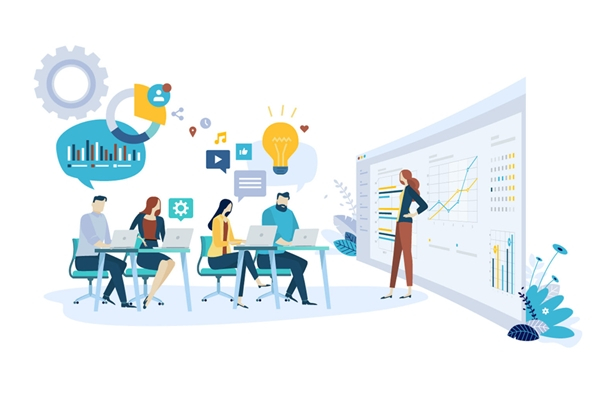Ever since WHO announced that COVID-19 was a pandemic, we’ve witnessed it spread like fire, from country to country. It halted the global economy, shifted the focus toward essential workers, and brought the healthcare industry to its knees. The virus seems unstoppable. Organizations all over the globe realized that they needed to change the way they operated if they wanted to continue running their businesses.
Those who adapt will probably stick to changes once they realize all the potential. But one thing’s for sure—the right to privacy must remain sacred.
According to the newest COVID-19 information , the impact of coronavirus forced countries to consider implementing additional measures to ensure the safety of their people.
Privacy Issues Might Affect Other Measures
One of the biggest concerns is privacy breach. The loss of faith in one’s country and organizations could affect how other practices are enforced after the pandemic.
Privacy issues include multiple things—scanning of financial records, analysis of location data of mobile phone users to keep track of how many are obeying the lockdown, using the cached data, and so on.
In China, the government forced people to download an app to their phones that uses red, yellow, or green color codes to indicate the contagion risks.
The right to privacy is also breached in Singapore. The Ministry of Health posted the COVID-19 patients’ medical records online for the public to see.
Even though some of these methods might be the way we will combat COVID-19 in the future, the main question remains—how far will these privacy breaches go once the pandemic is over? Will they affect the workers desperately looking for employment? Will those who were infected and recorded be prevented from applying to particular job openings?
One thing is certain—privacy breaches should be eliminated. And if they do happen, they mustn’t in any way affect the citizens after the pandemic is over.
Best Practices Post-COVID-19
Depending on the organization and the industry, different measures will be implemented to help secure all employees and minimize the risk of infection. At the same time, they are designed to restore the faith of an employee and consumer in the organization. Some of the best practices after the pandemic is over may include the following:
◆ Update of the organizational work plan. As new policies emerge, organizations are advised to look into what’s changed and implement the changes in their organizational work plan as best as possible. Business priorities are to be reviewed and resources allocated, according to new business objectives.
◆ Communication with both employees and customers. Communication is not a one-way street—you should both speak and listen. With proper communication, you’re letting your employees and customers know that they’re valuable to the organization. Both parties should be encouraged to provide feedback. That way, you’ll understand what tweaks have to be made in your organization and you’ll be able to act accordingly.
◆ Enforced sanitation rules. These include both physical distancing and the use of PPE. Do your best to provide your organization with all the necessary equipment. That way, you’re keeping your customers safe, too. Keep all common areas disinfected during the day.
◆ Workforce optimization. Companies now consider automation. One example is the retail companies, which are now switching to technology such as robotic process automation (RPA). RPA can help them create software or a “robot” that emulates repetitive human actions.
◆ Safety is a number one priority. Organizations are advised to limit access for non-employees in certain areas. The security check-in process will also be implemented. Posting the rules and signs around the organization will become a must.
◆ Constant evaluation. Keeping the measures in mind, ongoing assessment of the workforce is advised to help control potential issues. Employees should be encouraged to notify their superior if they notice any symptoms, or they’ve come in contact with someone who may be infected.
◆ Other measures. These include but are not limited to video conferences. This allows for more work to be done remotely. With this trend, a business may become more efficient in less time. The trend will also affect travel expenses and carbon footprint.
Conclusion
The COVID-19 pandemic exposed many flaws in the system around us. What was thought impossible is now put into action. The global economy is on the brink of an enormous shift. What worked in the past will now be pushed aside to make room for new solutions. Even though many organizations will suffer greatly, the truth is that many can adapt to unique circumstances.
Employees returning to work will fear the new invisible enemy. Still, every country did its best to provide the organizations and companies all the information they needed to keep their employees safe. Keeping the businesses running is the only way to save the economy, and following the new practices is a necessity.

Has COVID-19 forever changed the way we live and work?
Trending
-
SBI General Insurance Launches Digital Health Campaign
-
CredR Rolls Out 'Life Happens' Leave For Its Employees
-
Meesho Announces 30-Week Gender-Neutral Parental Leave Policy
-
Microsoft Unveils Tech Resilience Curriculum To Foster An Inclusive Future
-
60% Indian Professionals Looking For Job Change Due To COVID: Survey
-
SpringPeople And Siemens Collaborate For Digital Transformation Push
-
86% Professionals Believe Hybrid Work Is Essential For Work Life Balance: Report
-
Almost 1 In Every 3 People's Personal Life Affected Due To Work Stress
-
Meesho Rolls Out Reset And Recharge Policy For Employees
-
80% Of Talent Leaders & Academics Say Pandemic Changed Skill Needs For Youth: Report
-
Hero Electric Rolls Out 'Hero Care' Program For Employees
-
Human Capital In Collaboration With ASSOCHAM Hosts Virtual Conference
-
IKEA India, Tata STRIVE Collaborate To Create Employability And Entrepreneurship Opportunities
-
SAP India, Microsoft Launch Tech Skilling Program for Young Women
-
DXC Technology, NASSCOM Collaborate For Employability Skills Program
-
Lenskart To Hire Over 2000 Employees Across India By 2022
-
Mindtree Launches Learn-and-Earn Program
-
Tata AIA Extends 'Raksha Ka Teeka' To Its Employees
-
Swadesh Behera Is The New CPO Of Titan
-
NetConnect Global Plans To Recruit 5000 Tech Professionals In India
-
Hubhopper Plans To Hire 60% Of Indian Podcasters By 2022
-
Corporate India Needs More Women In Leadership Roles: Report
-
Aon to Invest $30 Million and Create 10,000 Apprenticeships by 2030
-
Tech Mahindra Launches ‘Gift a Career’ Initiative for Upskilling of Youth
-
40% Women Prefer Flexible Working Options in Post-COVID World: Survey
-
3 out of 4 companies believe they can effectively hire employees virtually: Report
-
Vodafone , CGI and NASSCOM Foundation launch digital skills platform
-
Odisha: Bank, postal employees to deliver cash for elderly, differently-abled persons
-
Skill India launches AI-based digital platform for "Skilled Workforce"
-
Hiring activity declines 6.73% in first quarter: Survey
-
70% startups impacted by COVID-19 pandemic
-
Bajaj Allianz Life ropes in Santanu Banerjee as CHRO
-
Over 70 Percent MSMEs look at cutting jobs to sustain businesses
-
93 Per Cent employees stressed about returning to office post-lockdown
-
Johnson & Johnson India announces family benefits for same gender partners
-
Indian firms turning friendly towards working mothers
-
Welspun India names Rajendra Mehta as new CHRO
-
Wipro partners with NASSCOM to launch Future Skills platform



Human Capital is niche media organisation for HR and Corporate. Our aim is to create an outstanding user experience for all our clients, readers, employers and employees through inspiring, industry-leading content pieces in the form of case studies, analysis, expert reports, authored articles and blogs. We cover topics such as talent acquisition, learning and development, diversity and inclusion, leadership, compensation, recruitment and many more.
Subscribe Now












































Comment